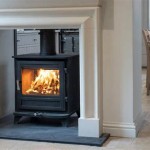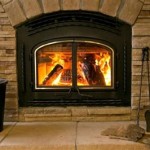Elevating Your Home with Fireplace Stacked Stone
Fireplaces have long been a focal point in homes, providing warmth, comfort, and a sense of aesthetic appeal. Among the various materials used to enhance a fireplace, stacked stone stands out for its unique texture, natural beauty, and ability to complement diverse interior design styles. This article explores the advantages of using stacked stone for fireplace surrounds, offering insights into design considerations and installation basics.
Stacked stone, also known as ledger stone, is a decorative building material comprised of natural or manufactured stone pieces adhered together to form a single panel. These panels are designed to create a textured, dimensional surface that emulates a natural stone wall. The visual effect is one of rustic elegance, adding depth and character to any space. The types of stone used in stacked stone panels vary widely, including slate, quartzite, granite, and travertine. Manufactured options replicate the look of natural stone using concrete or other composite materials, offering a cost-effective alternative.
Aesthetic Versatility and Design Impact
The versatile nature of stacked stone allows it to seamlessly integrate into a wide range of architectural and design styles. Whether the objective is to create a cozy, rustic ambiance or a sleek, contemporary look, stacked stone can be adapted to suit the intended aesthetic. In rustic settings, rough-textured stones with earthy tones can enhance the natural feel, complementing exposed beams and wooden furniture. Conversely, smoother, lighter-colored stones are ideal for modern spaces, providing a clean and sophisticated contrast to minimalist decor.
Color selection is a crucial aspect of designing with stacked stone. Consider the existing color palette of the room to ensure a cohesive and harmonious look. Neutral tones, such as grays, beiges, and whites, are versatile and can blend easily with various color schemes. For a bolder statement, darker stones, like charcoal or black slate, can create a dramatic focal point. The choice of grout color also influences the overall appearance. Matching grout will create a seamless look, while contrasting grout can highlight the individual stones and add more visual interest.
Beyond color and texture, the layout of the stacked stone can significantly impact the design. A full fireplace surround, extending from floor to ceiling, creates a grand and impactful statement. Alternatively, a partial surround, covering only a portion of the wall around the firebox, offers a more subtle and understated approach. The decision depends on the size of the room, the desired level of visual impact, and the overall design concept.
Benefits of Using Stacked Stone for Fireplaces
Beyond its aesthetic appeal, stacked stone offers several practical advantages for fireplace applications. Stone is naturally a non-combustible material, providing enhanced safety around a heat source. This is particularly important for fireplaces, where high temperatures are generated. While natural stone provides the best protection, manufactured stone used for fireplace applications usually have fire-resistant additives.
Stacked stone is also relatively low-maintenance. Once installed, it requires minimal upkeep. Occasional dusting or wiping with a damp cloth is typically sufficient to keep it clean. Unlike painted surfaces, stacked stone is resistant to scratches and fading, ensuring a long-lasting and visually appealing finish. Its durability makes it a practical choice for high-traffic areas.
The installation process for stacked stone panels is generally simpler and less time-consuming compared to installing individual stones. The panels are pre-assembled, allowing for quicker and more uniform application. Despite its ease of installation, professional installation is recommended, especially for complex fireplace designs.
Installation Considerations and Techniques
Proper surface preparation is essential for a successful stacked stone installation. The surface must be clean, dry, and structurally sound. If the existing surface is painted or has a glossy finish, it should be roughened to ensure proper adhesion. Applying a bonding agent or primer can further enhance adhesion, especially on smooth or non-porous surfaces.
Selecting the appropriate mortar or adhesive is crucial for securing the stacked stone panels. A high-quality thin-set mortar specifically designed for stone veneer is recommended. Follow the manufacturer's instructions carefully regarding mixing ratios and application techniques. Apply the mortar evenly to the back of the panels and press them firmly against the prepared surface, ensuring proper alignment and spacing.
Cutting stacked stone panels to fit around the firebox or other architectural features requires precision and appropriate tools. A wet saw with a diamond blade is ideal for cutting stone, as it minimizes dust and ensures clean, accurate cuts. Safety precautions, such as wearing safety glasses and gloves, should always be observed when cutting stone. After installation, allowing the mortar or adhesive to fully cure before using the fireplace is crucial for ensuring the stability and longevity of the installation.

12 Stacked Stone Fireplace Ideas For Optimal Coziness

12 Stacked Stone Fireplace Ideas For Optimal Coziness

Natural Stacked Stone Veneer Fireplace Ideas

5 Stacked Stone Surrounds Travertine Quartzite Or Marble

Is A Cozy Stacked Stone Fireplace Your Next Dream Project

Foyer Intérieur Design D Aménagement Avec Parement Pierre Naturelle Inspirationmaison Idmai Home Fireplace Brick Makeover

Stacked Stone Fireplace 10 Luxurious Design Ideas Stoneyard

5 Stacked Stone Surrounds Travertine Quartzite Or Marble

Pin On Woodworking

Is A Cozy Stacked Stone Fireplace Your Next Dream Project
Related Posts








